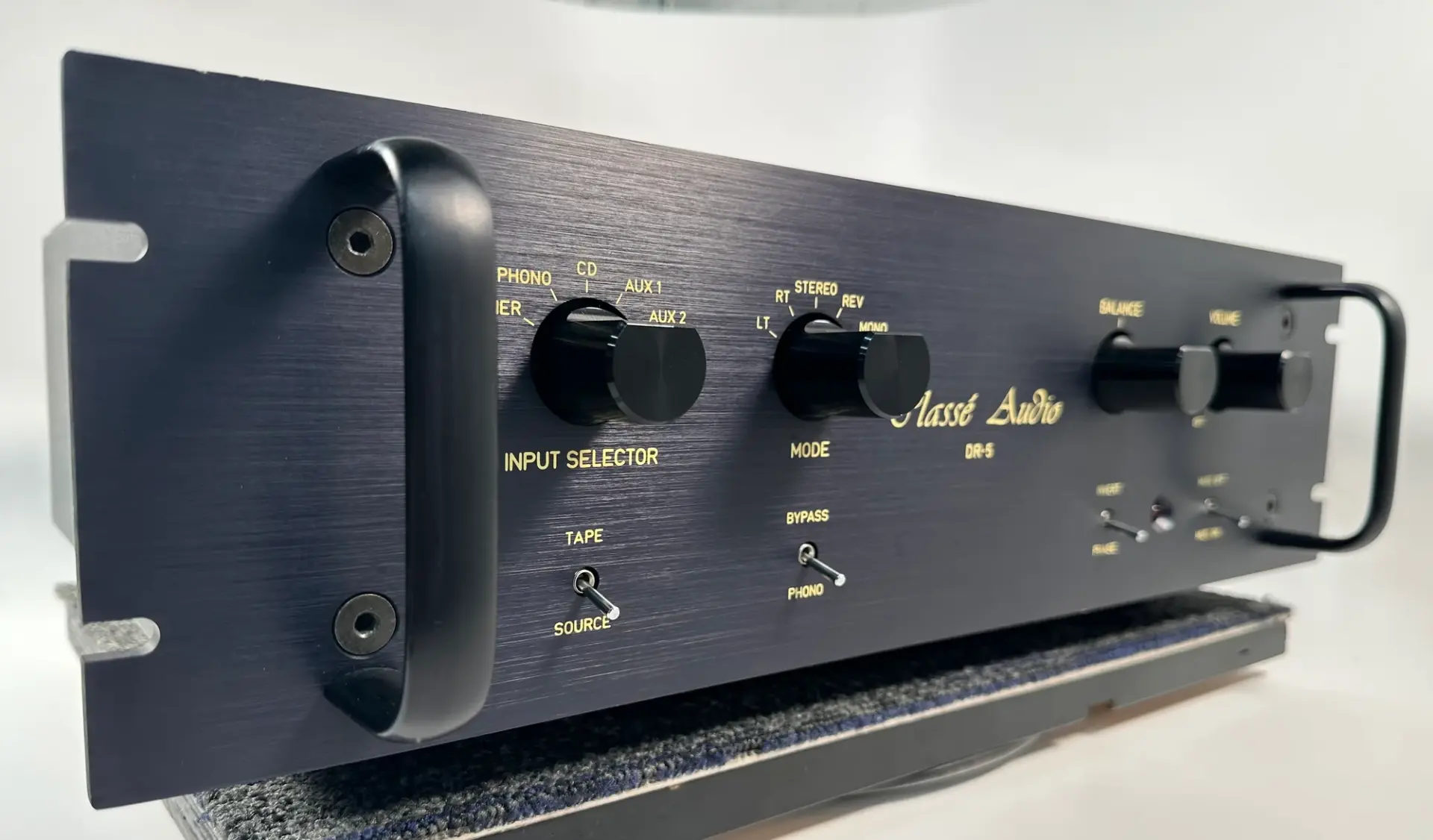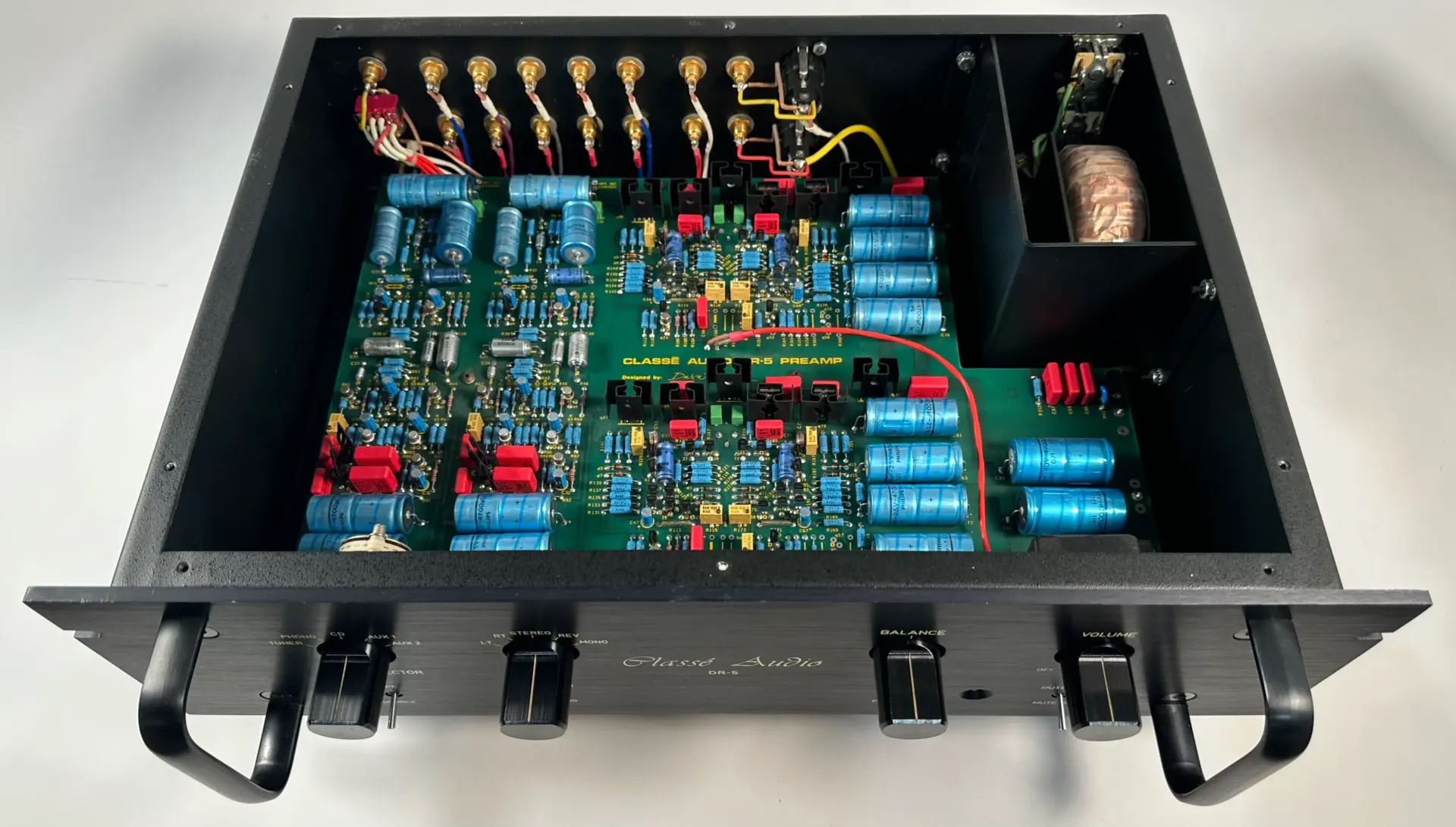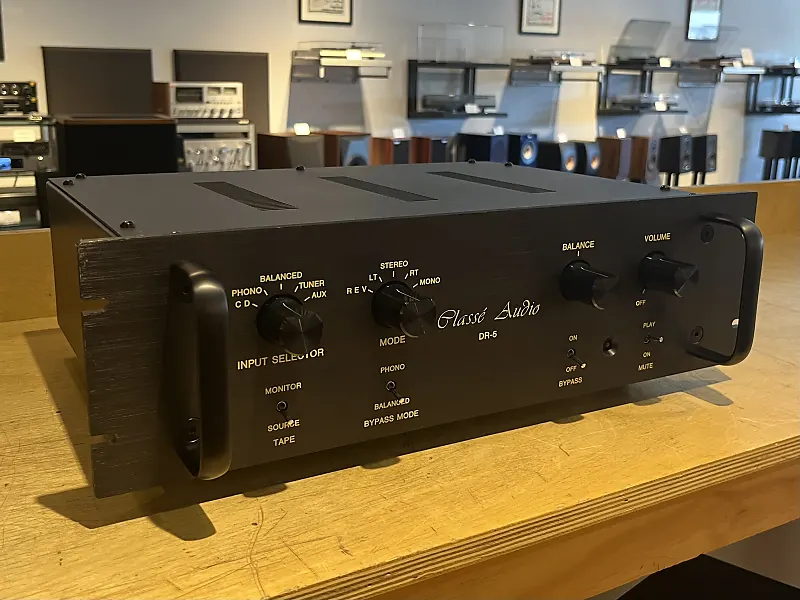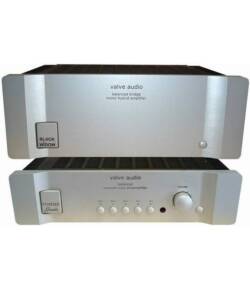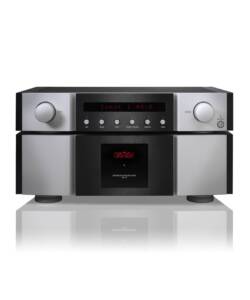Classe Five Preamplifier (Black)
Original price was: R45,000.00.R12,000.00Current price is: R12,000.00.
Specs:
Frequency response: 20Hz to 20kHz
Gain: 24dB (MC), 35dB (MM), 25dB (line)
Input sensitivity: 0.3mV (MC), 3mV (MM), 120mV (line)
Signal to noise ratio: 80dB (MC), 80dB (MM), 90dB (line)
Approximate Age:
1995
Description
Tuesday, June 19, 2018
Review: Classe Five preamplifier

Introduction:
Given my heavy valve past going with an upscale solid-state preamplifier was a difficult choice. Though certainly not a heart-wrenching one as I do have more recent experiences with Threshold, Adcom, and even some homebrew gear. And since I was considering going all separates, different preamps for both phono and line, my choice to buy a full-function Classe 5 may also be a puzzling one.Classe, however, is one of those companies that have been on my radar ever since I was a twenty-something reading Absolute Sound and Stereophile. Back then Classe was considered very “tube-like” and warm, completely opposite to the common complaint of much solid-state gear: harsh or strident, especially in the treble region. Such descriptions, like the warm sound of early Mac SS gear, piqued my interest. But since I was a poor college student, living on a diet of vintage tube amps, Mac ‘n’ Cheese, and $2.99 records, anything in the price range of a Classe DR-5 or DR-6 preamplifier was unthinkable. So instead I soldiered on with DIY gear, plenty of Dynaco PAS preamps, and an Eico HF-85.Well doesn’t time fly? Perusing through the Audiogon ads, I saw a recently listed Classe Five preamplifier. It had a phono stage, switchable from MM or MC cartridges, and even a remote control. Their isn’t much information out there on the Five but some search engine sleuthing and I found it is essentially an upgraded 1990s version of the original DR-5. It also features balanced (XLR) or single-ended (RCA) outputs; a single set of balanced inputs too if I ever needed them. The XLR outputs will come in very handy for my planned bridged ACA amplifiers that are being built sometime very soon.
With the price being right, I put an offer in and it was accepted. Given the proximity of the seller, I received the preamplifier the next day. Unpacking the Classe Five and I found myself with a very heavy duty unit that was nearly flawless. The switches, which have a wonderful tactile feel, worked perfectly, as did the remote control and the various knobs. The wireless remote has buttons that causes little motors on the volume and balance to physically turn the knobs. Very neat (I’m still an adolescent at heart!). This is also great for adjusting the gain to get that perfect playback level from the comfort of my favorite listening chair.
Initial Impressions:
It is always exciting to listen to something new – but the Five wasn’t exactly earth shattering. The sound was dark, a bit muffled, and seemingly missing some bite on the top end. Bass, however, was controlled and the overall sound was smooth. With only an hour or so of time, I went to bed, leaving my new preamplifier in standby mode since there is no power off button.
The next day, after work, I heard an improvement in sound. The smoothness was still there but everything sounded a lot more cohesive. I fought the urge to do any serious listening, waiting for a quiet Sunday afternoon where I could experience the Classe Five without any familial distractions.

In my doddering middle-age I’ve become a bit of a Chet Baker fanatic, even exploring his musical output beyond his 1950s heyday. Nonetheless I still have an appreciation for his signature album, Chet. It’s a brooding masterpiece that has the fingerprints of Bill Evans all over it. Listening to this album – 1980s Riverside pressing – reveals a lot more detail than I was hearing through the Adcom GFP-555. The Classe Five does a better job of revealing the light cymbal work, which sounds deeper in the soundstage but with the attack and decay being more apparent as is the metallic nature. Too many systems turn cymbals into a hard SHHHH noise, instead of the shimmering, complex sound it should be.
Instrument – piano, the brass instruments, and drum – have a more natural body than my old preamplifier. The overall sound is very smooth but doesn’t inhibit the more aggressive tones of the music. It is a different type of smoothness than I ever heard; not imbued with a golden hue like a vintage tube preamplifier but more as if the sonics were cut from a single, grain-less cloth.
 Willie Nelson has a rich and immediately familiar voice. On Stardust, the vocals come across as completely natural with just a hint of studio reverb added. The instruments remain firmly behind the singer, reproducing the very intimate nature of this album. Tonality is some of the best I heard, exceeding my expectations given the budget nature of the speakers and my turntable and cartridge. Cohesiveness is another word that came to mind, and one that kept popping up as made notes. No single instrument seemed crowded out while another took the center of attention.
Willie Nelson has a rich and immediately familiar voice. On Stardust, the vocals come across as completely natural with just a hint of studio reverb added. The instruments remain firmly behind the singer, reproducing the very intimate nature of this album. Tonality is some of the best I heard, exceeding my expectations given the budget nature of the speakers and my turntable and cartridge. Cohesiveness is another word that came to mind, and one that kept popping up as made notes. No single instrument seemed crowded out while another took the center of attention.
 For something more dynamic, I turned to one of the greatest live blues albums ever recorded: Drinkin’ TNT ‘n’ Smokin’ Dynamite which has an all star backing band behind Buddy Guy and Junior Wells. The Classe Five captured the audience background noises allowing me to place them in location and distance from the stage. The dynamic shifts, given the limitations of the Wharfedale Denton speakers, were impressive; never sounding bloated or blurred. An example of this is the stuttering starts and stops of the lead guitar, along with the deep bass foundation. Each instrument had its own space but jelled together as one whole, making for a very toe-tappin’ experience.
For something more dynamic, I turned to one of the greatest live blues albums ever recorded: Drinkin’ TNT ‘n’ Smokin’ Dynamite which has an all star backing band behind Buddy Guy and Junior Wells. The Classe Five captured the audience background noises allowing me to place them in location and distance from the stage. The dynamic shifts, given the limitations of the Wharfedale Denton speakers, were impressive; never sounding bloated or blurred. An example of this is the stuttering starts and stops of the lead guitar, along with the deep bass foundation. Each instrument had its own space but jelled together as one whole, making for a very toe-tappin’ experience.
 After that good time, I needed a melancholic change of pace. Richard and Linda Thompson deliver this in spades with their album Shoot Out the Lights. Linda’s voice is sublime here, all barely hidden pain while the barbed wire guitar of Richard grinds away as if stripping the heart out of his troubled marriage. His backing vocals sit separate from hers, as if he is giving his ghostly agreement. This album, needless to say, a heart-wrenching series of songs. The Classe Five does an excellent job of baring these emotions.
After that good time, I needed a melancholic change of pace. Richard and Linda Thompson deliver this in spades with their album Shoot Out the Lights. Linda’s voice is sublime here, all barely hidden pain while the barbed wire guitar of Richard grinds away as if stripping the heart out of his troubled marriage. His backing vocals sit separate from hers, as if he is giving his ghostly agreement. This album, needless to say, a heart-wrenching series of songs. The Classe Five does an excellent job of baring these emotions.
I listened to several other albums of varying quality – like The Fixx, Wardruna, The Police, and even some old 1930s-era Billie Holiday. Poor recordings sounded like, well, poor recordings. And mediocre ones weren’t given any extra magic either. The Classe Five appears to be rather neutral, low in coloration, and even-handed. This one is a keeper.
Takeaways:
The Classe Five has the best treble I have ever heard from a solid-state preamplifier. At first I thought it was rolled-off; lacking in air and excitement. However further listen revealed that it is actually a lack of glare and edginess that is often common in lesser solid-state gear. If a recording is bright, you will hear that. If it is dull, or poorly recorded, that will be revealed. There is no heavy coloration going on here.
Along with this natural treble comes the feeling, from top to bottom, that all frequency points are sonically similar; that is to say no part of the sound, be it treble or bass, sticks outs or draws attention to itself. As I mentioned above, everything is cut from the same sonic cloth. It’s something I never quite heard to this degree with any preamplifier that I’ve ever owned and took some time to understand this new experience. A similar situation occurred when I first heard the VPI Aries 1, only then did I hear the warble and background rush of lesser turntables.
Bass control is excellent – tight and dynamic without any bloat or smear. This is essential for providing the foundation of the song.
Detail is very good; though some listeners may prefer a more hyper detailed presentation. Perhaps this is the limitation of my front-end or the nature of the Wharfedale speakers. Some future upgrades will see how well this holds true.
The quality of the Classe Five makes me question, to some degree, my allegiance to valves. At least with valve gear you can roll in different tubes to find the best match with your system. But, if you’re tired of buying high priced NOS valves or even new stock, then give the Classe Five a try. You may be surprised.
